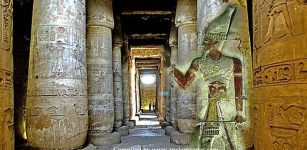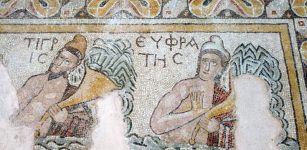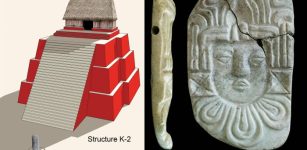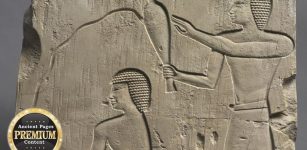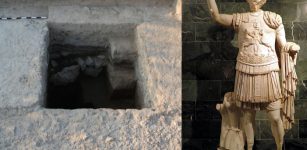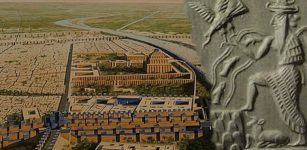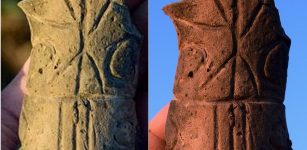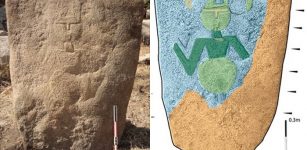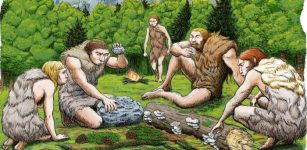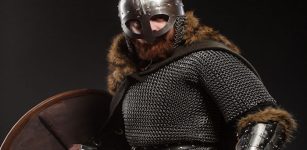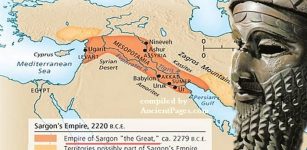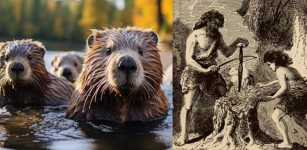Sobek: A 2,500-Year-Old Mummified Nile Crocodile – On Display At The British Museum
AncientPages.com - Sobek was a 2,500-year old crocodile worshipped in life by the ancient Egyptians and mummified with all due reverence after death.
The ancient Egyptians worshipped this crocodile as the embodiment of Sobek, the crocodile god, and many were mummified after their deaths.

Two visualisations of Sobek, including the contents of its stomach. © Trustees of the British Museum
Now, new fascinating findings reveal more about the crocodile’s life and death before it goes on display at the British Museum on Thursday.
During the mummification process it was dried in natron, a natural salt, covered with a mixture of beeswax and pitch and wrapped in linen bandages. The mummy dates from 650-550 BC and is nearly four metres long with more than 20 mummified crocodile hatchlings attached to its back.
The crocodile mummy and hatchlings were scanned at the Royal Veterinary College, London, using non-invasive, high-resolution computer tomography (CT) in order to reveal more about the life, death and mummification of this sacred animal.
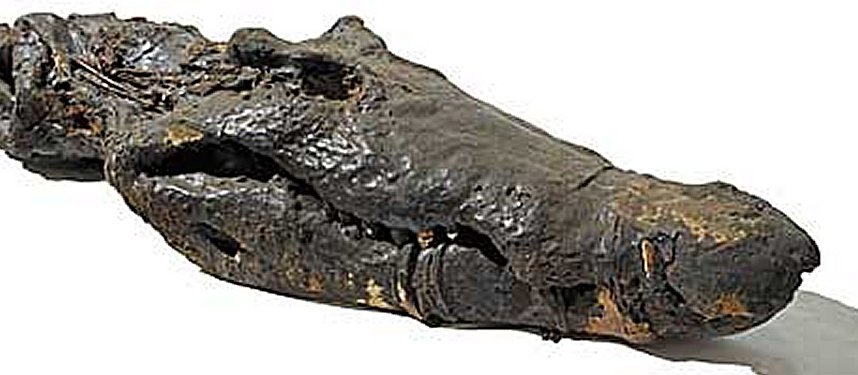
“Sharp of Teeth” and “Lord of Fear”: Sobek, a 2,500-year-old mummified crocodile, was worshipped as an incarnation of the crocodile god © Trustees of the British Museum
The CT scan data was then transformed into a 3D model to reveal very detailed images of the mummy’s internal features and evidence of the mummification process itself.
Not all organs were removed by the embalmers and the stomach contents - the remains of the crocodile’s last meal – are still present. The crocodile appears to have been fed select cuts of meat prior to death, including a cow’s shoulder bone and parts of a forelimb.
See also:
Sobek - Enigmatic Crocodile God of Ancient Egypt
Exact replicas of these bones – 3D printed from the scan data – are displayed next to a four-metre CT scan visualisation of the crocodile. The bones were found inside the stomach along with numerous small irregular-shaped stones, which the crocodile swallowed for ballast and to assist digestion, as well as several unidentified small metal objects.
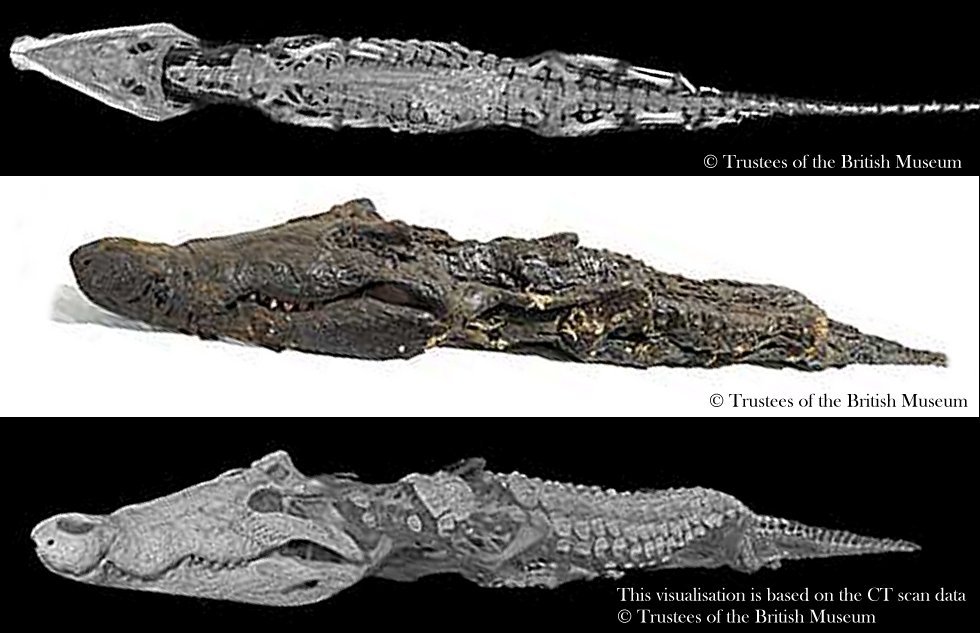
Scanning Sobek: mummy of the crocodile god is on display in Room 3 at the British Museum from December 10 2015 – February 21 2016.
The god Sobek symbolised the strength, power and potency of the pharaoh. The dangerous and unpredictable Nile crocodile was both an object of reverence and terror for the ancient Egyptians; something to be kept at bay and appeased with gifts and offerings.
This species of crocodile is the largest in Africa and second largest in the world. The exhibition explores how the Egyptians represented the god Sobek through additional objects that depict the god both as a crocodile and as a man with a crocodile head.
Animals were mummified by the ancient Egyptians in a fashion similar to that used to create human mummies with slight differences, and almost every type of animal was mummified. These mummies could be votive offerings for the gods, beloved pets or like this mummy, sacred animals, worshipped in life as manifestations of the gods themselves.
Sacred and votive mummies were buried in animal necropolises associated with a specific god’s cult. This practice peaked during the Greco-Roman period with large numbers of animals being mummified and buried.
AncientPages.com
source: Culture24


